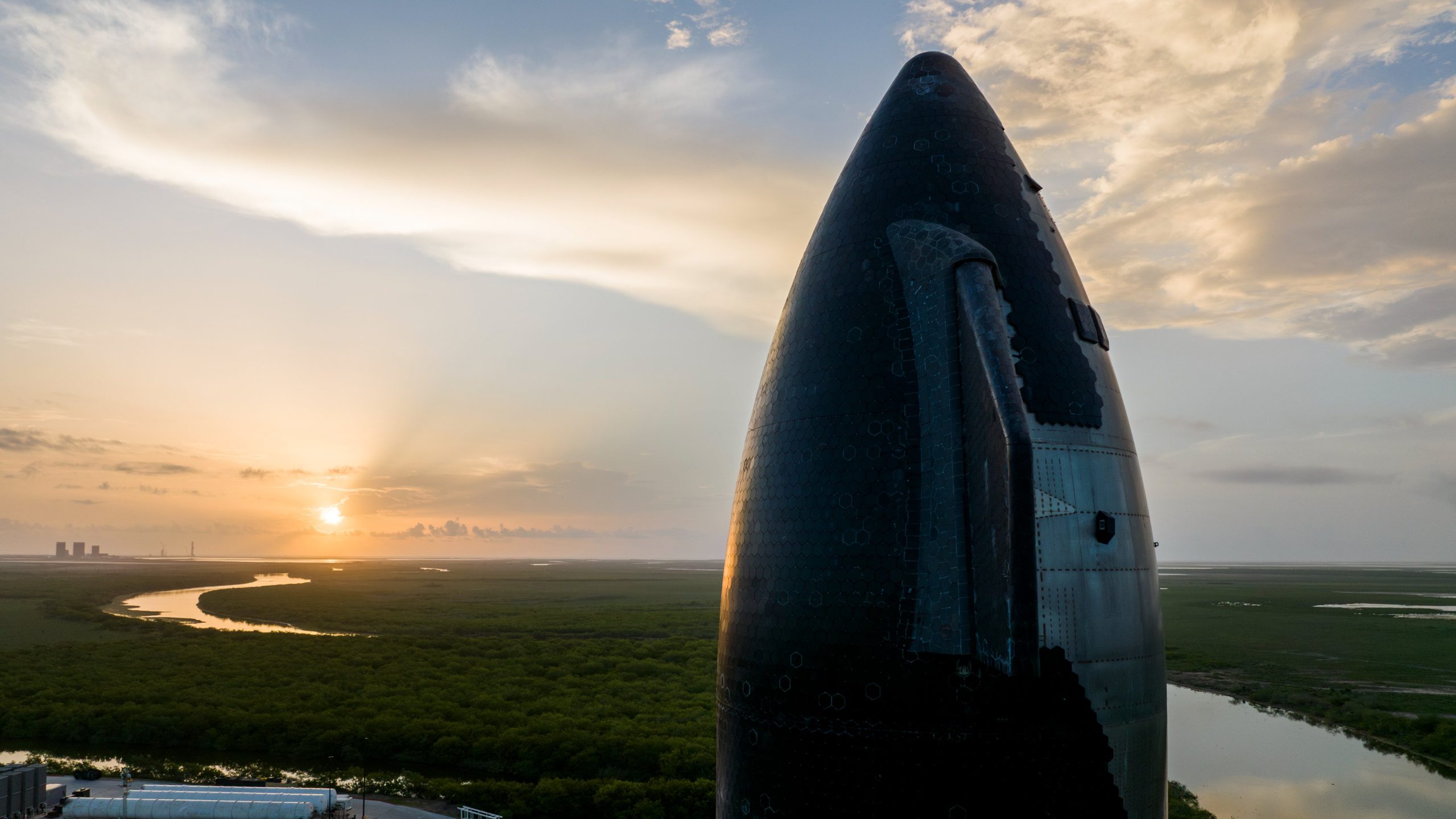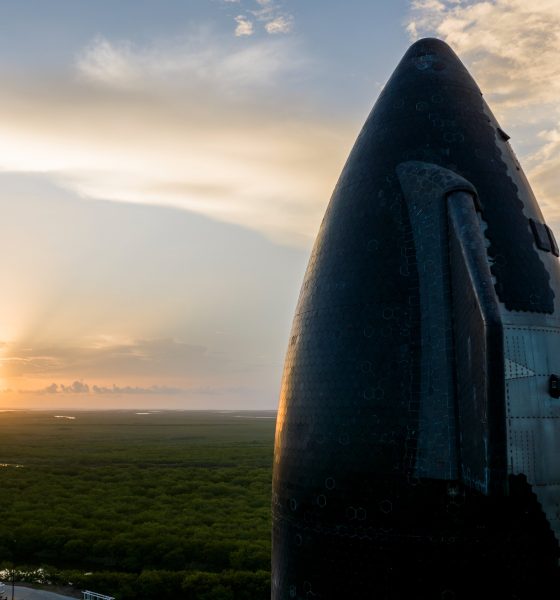SpaceX has responded to a critical report from CNBC alleging that it has repeatedly polluted waters in Texas this year. As per the private space company, the publication’s allegations about its launch operations in South Texas were factually inaccurate.
In its report, CNBC alleged that SpaceX violated environmental regulations by “repeatedly releasing pollutants into or near bodies of water in Texas.” The publication cited a notice of violation from the Texas Commission on Environmental Quality (TCEQ) about SpaceX’s water deluge system at Starbase, Texas, as part of its sources for its article.
The TCEQ reportedly received a complaint alleging that SpaceX “was discharging deluge water without TCEQ authorization” on August 2023. A total of 14 complaints alleging environmental impacts from Starbase’s deluge system have reportedly been received by the Harlingen region, the publication noted.
SpaceX repeatedly polluted waters in Texas this year, regulators found https://t.co/0KfZIxElxV— CNBC (@CNBC) August 12, 2024
In its response, which was posted through its official account on X, SpaceX noted that it worked with the TCEQ when Starbase’s water deluge system was built. SpaceX also clarified that it has only used potable water in the operations of Starship’s water deluge system.
Following is SpaceX’s full response to CNBC’s allegations.
CNBC’s story on Starship’s launch operations in South Texas is factually inaccurate.
Starship’s water-cooled flame deflector system is critical equipment for SpaceX’s launch operations. It ensures flight safety and protects the launch site and surrounding area.
Also known as the deluge system, it applies clean, potable (drinking) water to the engine exhaust during static fire tests and launches to absorb the heat and vibration from the rocket engines firing. Similar equipment has long been used at launch sites across the United States – such as Kennedy Space Center and Cape Canaveral Space Force Stations in Florida, and Vandenberg Space Force Base in California – and across the globe.
CNBC’s story on Starship’s launch operations in South Texas is factually inaccurate.
Starship’s water-cooled flame deflector system is critical equipment for SpaceX’s launch operations. It ensures flight safety and protects the launch site and surrounding area.
Also known as…— SpaceX (@SpaceX) August 12, 2024
SpaceX worked with the Texas Commission of Environmental Quality (TCEQ) throughout the build and test of the water deluge system at Starbase to identify a permit approach. TCEQ personnel were onsite at Starbase to observe the initial tests of the system in July 2023, and TCEQ’s website shows that SpaceX is covered by the Texas Multi-Sector General Permit.
When the EPA issued their Administrative Order in March 2024, it was done without an understanding of basic facts of the deluge system’s operation or acknowledgement that we were operating under the Texas Multi-Sector General Permit.
After we explained our operation to the EPA, they revised their position and allowed us to continue operating, but required us to obtain an Individual Permit from TCEQ, which will also allow us to expand deluge operations to the second pad. We’ve been diligently working on the permit with TCEQ, which was submitted on July 1st, 2024. TCEQ is expected to issue the draft Individual Permit and Agreed Compliance Order this week.
Throughout our ongoing coordination with both TCEQ and the EPA, we have explicitly asked if operation of the deluge system needed to stop and we were informed that operations could continue.
TCEQ and the EPA have allowed continued operations because the deluge system has always complied with common conditions set by an Individual Permit, and causes no harm to the environment.
Specifically:
– We only use potable (drinking) water in the system’s operation. At no time during the operation of the deluge system is the potable water used in an industrial process, nor is the water exposed to industrial processes before or during operation of the system.
– The launch pad area is power-washed prior to activating the deluge system, with the power-washed water collected and hauled off.
– The vast majority of the water used in each operation is vaporized by the rocket’s engines.
– We send samples of the soil, air, and water around the pad to an independent, accredited laboratory after every use of the deluge system, which have consistently shown negligible traces of any contaminants. Importantly, while CNBC’s story claims there are “very large exceedances of the mercury” as part of the wastewater discharged at the site, all samples to-date have in fact shown either no detectable levels of mercury whatsoever or found in very few cases levels significantly below the limit the EPA maintains for drinking water.
– Retention ponds capture excess water and are specially lined to prevent any mixing with local groundwater. Any water captured in these ponds, including water from rainfall events, is pumped out and hauled off.
– Finally, some water does leave the area of the pad, mostly from water released prior to ignition and after engine shutdown or launch. To give you an idea of how much: a single use of the deluge system results in potable water equivalent to a rainfall of 0.004 inches across the area outside the pad which currently averages around 27 inches of rain per year.
With Starship, we’re revolutionizing humanity’s ability to access space with a fully reusable rocket that plays an integral role in multiple national priorities, including returning humans to the surface of the Moon. SpaceX and its thousands of employees work tirelessly to ensure the United States remains the world’s leader in space, and we remain committed to working with our local and federal partners to be good stewards of the environment.
Don’t hesitate to contact us with news tips. Just send a message to simon@teslarati.com to give us a heads up.

News
Tesla starts showing how FSD will change lives in Europe
Local officials tested the system on narrow country roads and were impressed by FSD’s smooth, human-like driving, with some calling the service a game-changer for everyday life in areas that are far from urban centers.

Tesla has launched Europe’s first public shuttle service using Full Self-Driving (Supervised) in the rural Eifelkreis Bitburg-Prüm region of Germany, demonstrating how the technology can restore independence and mobility for people who struggle with limited transport options.
Local officials tested the system on narrow country roads and were impressed by FSD’s smooth, human-like driving, with some calling the service a game-changer for everyday life in areas that are far from urban centers.
Officials see real impact on rural residents
Arzfeld Mayor Johannes Kuhl and District Administrator Andreas Kruppert personally tested the Tesla shuttle service. This allowed them to see just how well FSD navigated winding lanes and rural roads confidently. Kruppert said, “Autonomous driving sounds like science fiction to many, but we simply see here that it works totally well in rural regions too.” Kuhl, for his part, also noted that FSD “feels like a very experienced driver.”
The pilot complements the area’s “Citizen Bus” program, which provides on-demand rides for elderly residents who can no longer drive themselves. Tesla Europe shared a video of a demonstration of the service, highlighting how FSD gives people their freedom back, even in places where public transport is not as prevalent.
What the Ministry for Economic Affairs and Transport says
Rhineland-Palatinate’s Minister Daniela Schmitt supported the project, praising the collaboration that made this “first of its kind in Europe” possible. As per the ministry, the rural rollout for the service shows FSD’s potential beyond major cities, and it delivers tangible benefits like grocery runs, doctor visits, and social connections for isolated residents.
“Reliable and flexible mobility is especially vital in rural areas. With the launch of a shuttle service using self-driving vehicles (FSD supervised) by Tesla in the Eifelkreis Bitburg-Prüm, an innovative pilot project is now getting underway that complements local community bus services. It is the first project of its kind in Europe.
“The result is a real gain for rural mobility: greater accessibility, more flexibility and tangible benefits for everyday life. A strong signal for innovation, cooperation and future-oriented mobility beyond urban centers,” the ministry wrote in a LinkedIn post.
News
Tesla China quietly posts Robotaxi-related job listing
Tesla China is currently seeking a Low Voltage Electrical Engineer to work on circuit board design for the company’s autonomous vehicles.

Tesla has posted a new job listing in Shanghai explicitly tied to its Robotaxi program, fueling speculation that the company is preparing to launch its dedicated autonomous ride-hailing service in China.
As noted in the listing, Tesla China is currently seeking a Low Voltage Electrical Engineer to work on circuit board design for the company’s autonomous vehicles.
Robotaxi-specific role
The listing, which was shared on social media platform X by industry watcher @tslaming, suggested that Tesla China is looking to fill the role urgently. The job listing itself specifically mentions that the person hired for the role will be working on the Low Voltage Hardware team, which would design the circuit boards that would serve as the nervous system of the Robotaxi.
Key tasks for the role, as indicated in the job listing, include collaboration with PCB layout, firmware, mechanical, program management, and validation teams, among other responsibilities. The role is based in Shanghai.
China Robotaxi launch
China represents a massive potential market for robotaxis, with its dense urban centers and supportive policies in select cities. Tesla has limited permission to roll out FSD in the country, though despite this, its vehicles have been hailed as among the best in the market when it comes to autonomous features. So far, at least, it appears that China supports Tesla’s FSD and Robotaxi rollout.
This was hinted at in November, when Tesla brought the Cybercab to the 8th China International Import Expo (CIIE) in Shanghai, marking the first time that the autonomous two-seater was brought to the Asia-Pacific region. The vehicle, despite not having a release date in China, received a significant amount of interest among the event’s attendees.
Elon Musk
Elon Musk and Tesla AI Director share insights after empty driver seat Robotaxi rides
The executives’ unoccupied tests hint at the rapid progress of Tesla’s unsupervised Robotaxi efforts.

Tesla CEO Elon Musk and AI Director Ashok Elluswamy celebrated Christmas Eve by sharing personal experiences with Robotaxi vehicles that had no safety monitor or occupant in the driver’s seat. Musk described the system’s “perfect driving” around Austin, while Elluswamy posted video from the back seat, calling it “an amazing experience.”
The executives’ unoccupied tests hint at the rapid progress of Tesla’s unsupervised Robotaxi efforts.
Elon and Ashok’s firsthand Robotaxi insights
Prior to Musk and the Tesla AI Director’s posts, sightings of unmanned Teslas navigating public roads were widely shared on social media. One such vehicle was spotted in Austin, Texas, which Elon Musk acknowleged by stating that “Testing is underway with no occupants in the car.”
Based on his Christmas Eve post, Musk seemed to have tested an unmanned Tesla himself. “A Tesla with no safety monitor in the car and me sitting in the passenger seat took me all around Austin on Sunday with perfect driving,” Musk wrote in his post.
Elluswamy responded with a 2-minute video showing himself in the rear of an unmanned Tesla. The video featured the vehicle’s empty front seats, as well as its smooth handling through real-world traffic. He captioned his video with the words, “It’s an amazing experience!”
Towards Unsupervised operations
During an xAI Hackathon earlier this month, Elon Musk mentioned that Tesla owed be removing Safety Monitors from its Robotaxis in Austin in just three weeks. “Unsupervised is pretty much solved at this point. So there will be Tesla Robotaxis operating in Austin with no one in them. Not even anyone in the passenger seat in about three weeks,” he said. Musk echoed similar estimates at the 2025 Annual Shareholder Meeting and the Q3 2025 earnings call.
Considering the insights that were posted Musk and Elluswamy, it does appear that Tesla is working hard towards operating its Robotaxis with no safety monitors. This is quite impressive considering that the service was launched just earlier this year.










